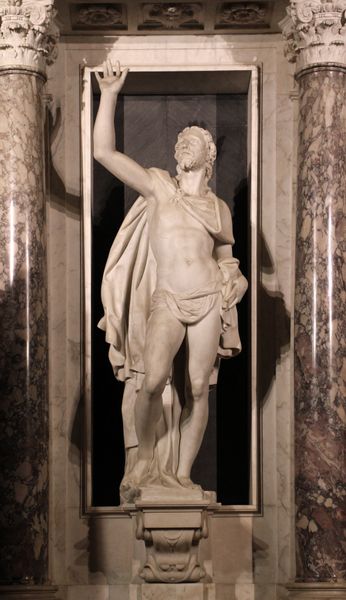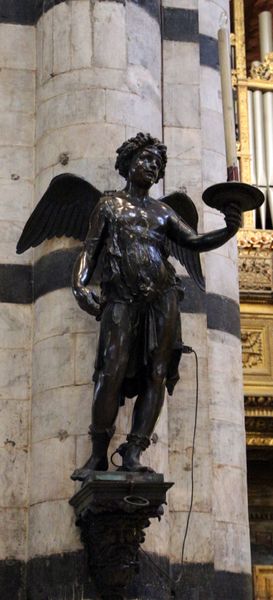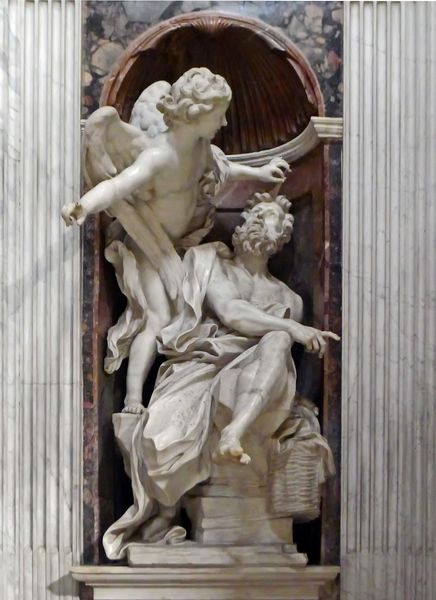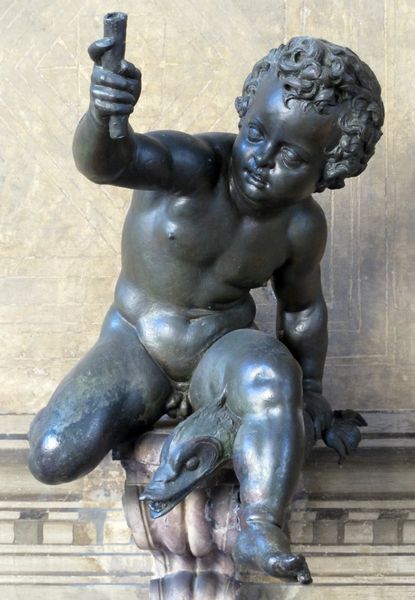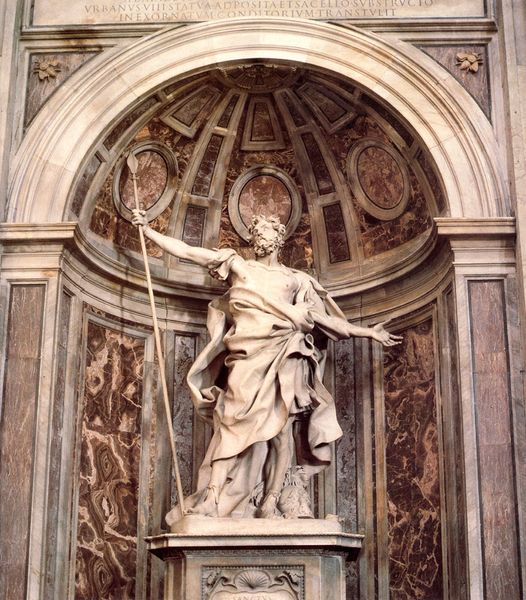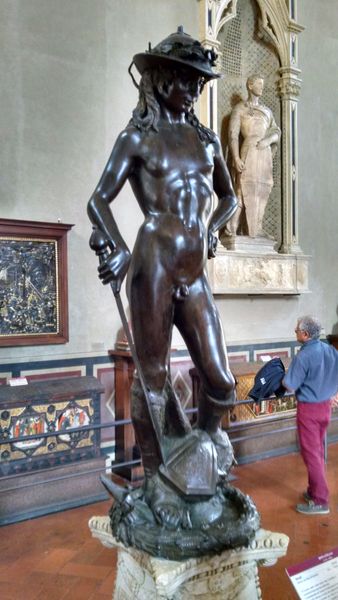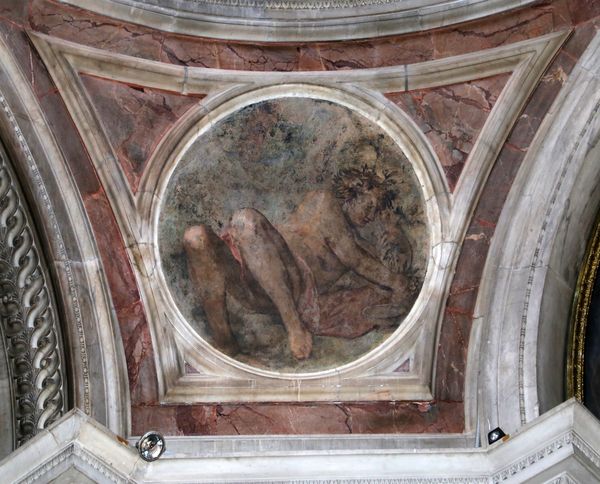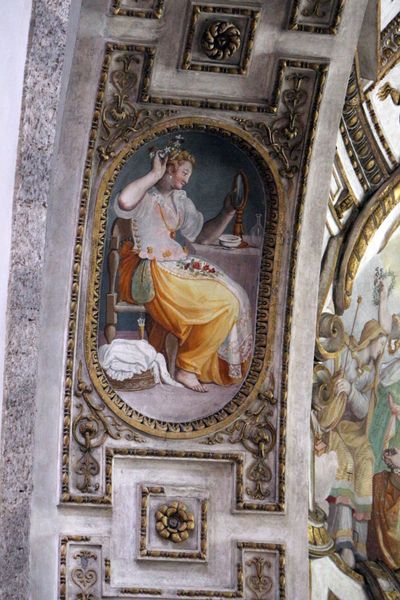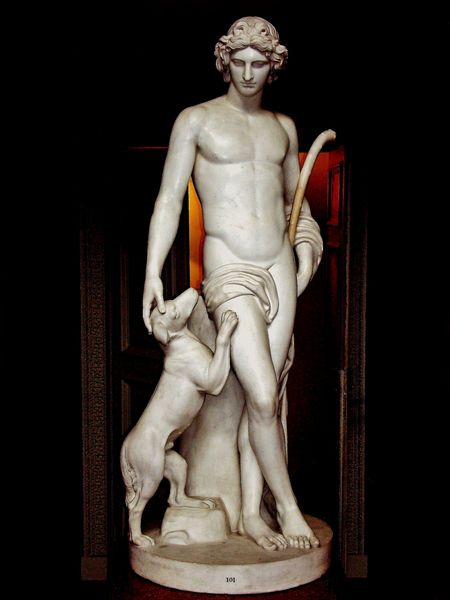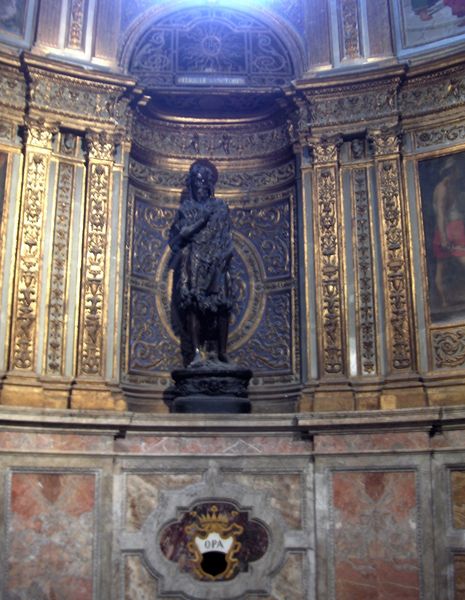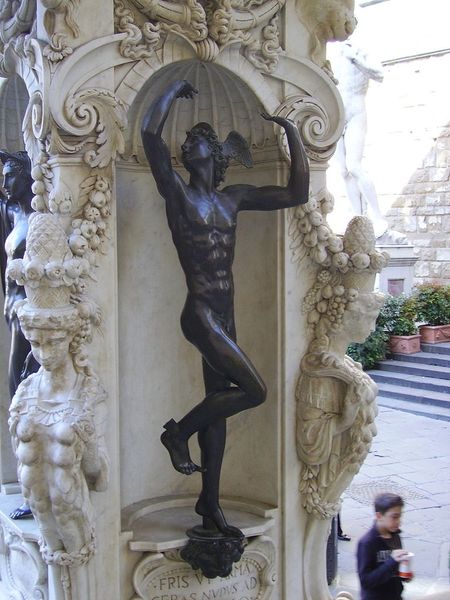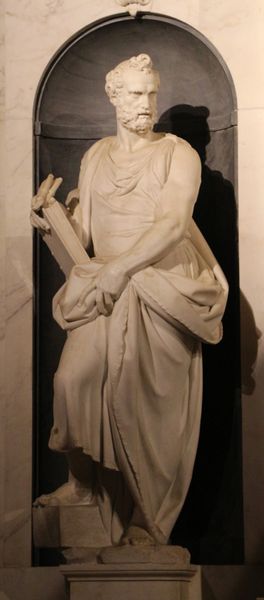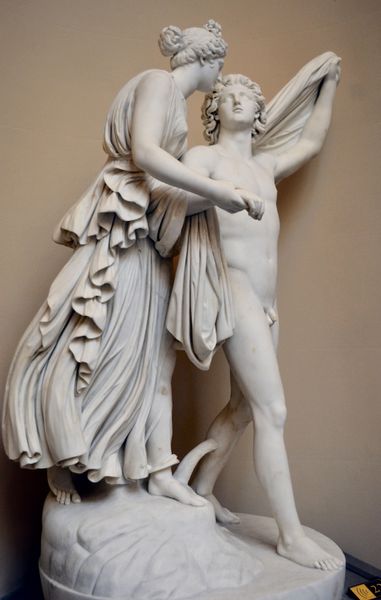
carving, bronze, sculpture
#
carving
#
sculpture
#
bronze
#
mannerism
#
figuration
#
historic architecture
#
sculpture
#
nude
Copyright: Public domain
Curator: The first impression is one of poised melancholy; it seems the subject of the bronze carving by Giambologna, crafted around 1573, is contemplative. Editor: And, true to its era, it echoes a complex narrative landscape. This sculpture, entitled Apollo, situates itself within the political and religious climate of Mannerism. Curator: Mannerism certainly allows for distortion. Apollo isn’t standing heroically, instead there's a slight contortion to his posture. Look how the curve of his hip shifts and extends his contrapposto far beyond Classical standards. His head dips. This seems deliberately composed to unsettle, moving past the perfection the High Renaissance canonized. Editor: The twisting form, typical of Mannerist sculpture, would demand the viewer to circle the artwork in order to perceive all sides. As such, it moves viewers' bodies within courtly space. That Giambologna, trained in the tenets of Renaissance classicism, employed such artistic liberties certainly places Apollo within the context of artistic experimentation characteristic of Mannerism in Florence. Curator: Indeed, you sense the movement captured in frozen time. The surfaces appear highly polished, almost glistening; it really accentuates the curvature and torsion throughout the entire form, directing light along the graceful undulations. Editor: It's important to contextualize the classical nude during the time this sculpture was made; for example, in Protestant territories across northern Europe, such imagery could easily spark controversy. Giambologna was well-aware that many interpreted nude statues as endorsements of sensual pagan rituals, but nudity was nevertheless commonly displayed in 16th-century royal gardens and courts to showcase taste and refinement. Curator: Ultimately, beyond subject or context, there’s a profound emotional language written across the piece. Its technical qualities combine to evoke a feeling beyond the constraints of narrative and beyond a single historical interpretation. Editor: I would agree that through Apollo, Giambologna created not only a stunning object, but a culturally embedded signifier shaped as much by his skill as a bronze caster, as by the political and religious anxieties that saturated the time in which it was conceived.
Comments
No comments
Be the first to comment and join the conversation on the ultimate creative platform.
